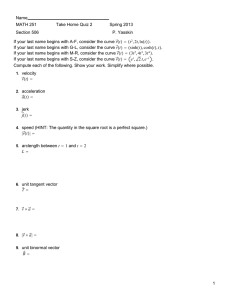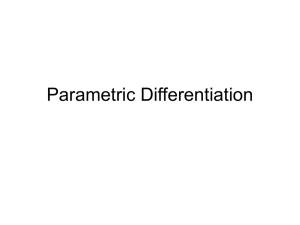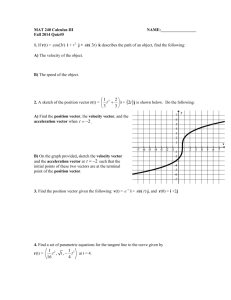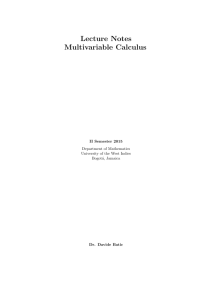CALC BC vectors probs
advertisement
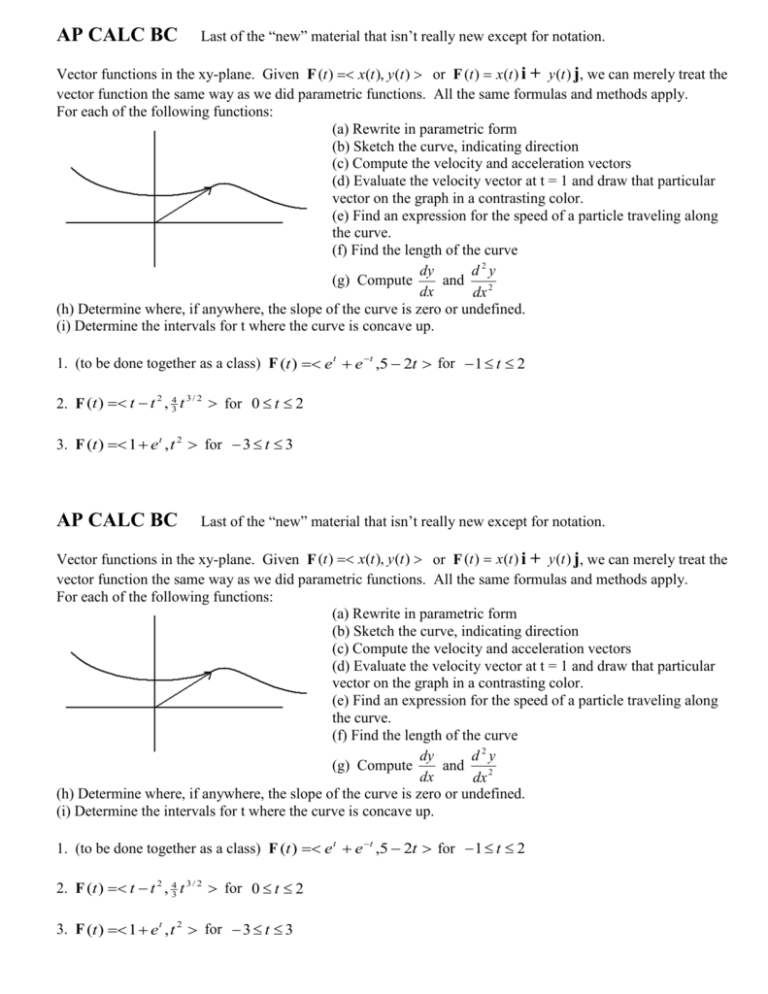
AP CALC BC Last of the “new” material that isn’t really new except for notation. Vector functions in the xy-plane. Given F (t ) x(t ), y (t ) or F (t ) x(t ) i + y (t ) j, we can merely treat the vector function the same way as we did parametric functions. All the same formulas and methods apply. For each of the following functions: (a) Rewrite in parametric form (b) Sketch the curve, indicating direction (c) Compute the velocity and acceleration vectors (d) Evaluate the velocity vector at t = 1 and draw that particular vector on the graph in a contrasting color. (e) Find an expression for the speed of a particle traveling along the curve. (f) Find the length of the curve dy d2y (g) Compute and dx dx 2 (h) Determine where, if anywhere, the slope of the curve is zero or undefined. (i) Determine the intervals for t where the curve is concave up. 1. (to be done together as a class) F (t ) e t e t ,5 2t for 1 t 2 2. F (t ) t t 2 , 43 t 3 / 2 for 0 t 2 3. F (t ) 1 e t , t 2 for 3 t 3 AP CALC BC Last of the “new” material that isn’t really new except for notation. Vector functions in the xy-plane. Given F (t ) x(t ), y (t ) or F (t ) x(t ) i + y (t ) j, we can merely treat the vector function the same way as we did parametric functions. All the same formulas and methods apply. For each of the following functions: (a) Rewrite in parametric form (b) Sketch the curve, indicating direction (c) Compute the velocity and acceleration vectors (d) Evaluate the velocity vector at t = 1 and draw that particular vector on the graph in a contrasting color. (e) Find an expression for the speed of a particle traveling along the curve. (f) Find the length of the curve dy d2y (g) Compute and dx dx 2 (h) Determine where, if anywhere, the slope of the curve is zero or undefined. (i) Determine the intervals for t where the curve is concave up. 1. (to be done together as a class) F (t ) e t e t ,5 2t for 1 t 2 2. F (t ) t t 2 , 43 t 3 / 2 for 0 t 2 3. F (t ) 1 e t , t 2 for 3 t 3
